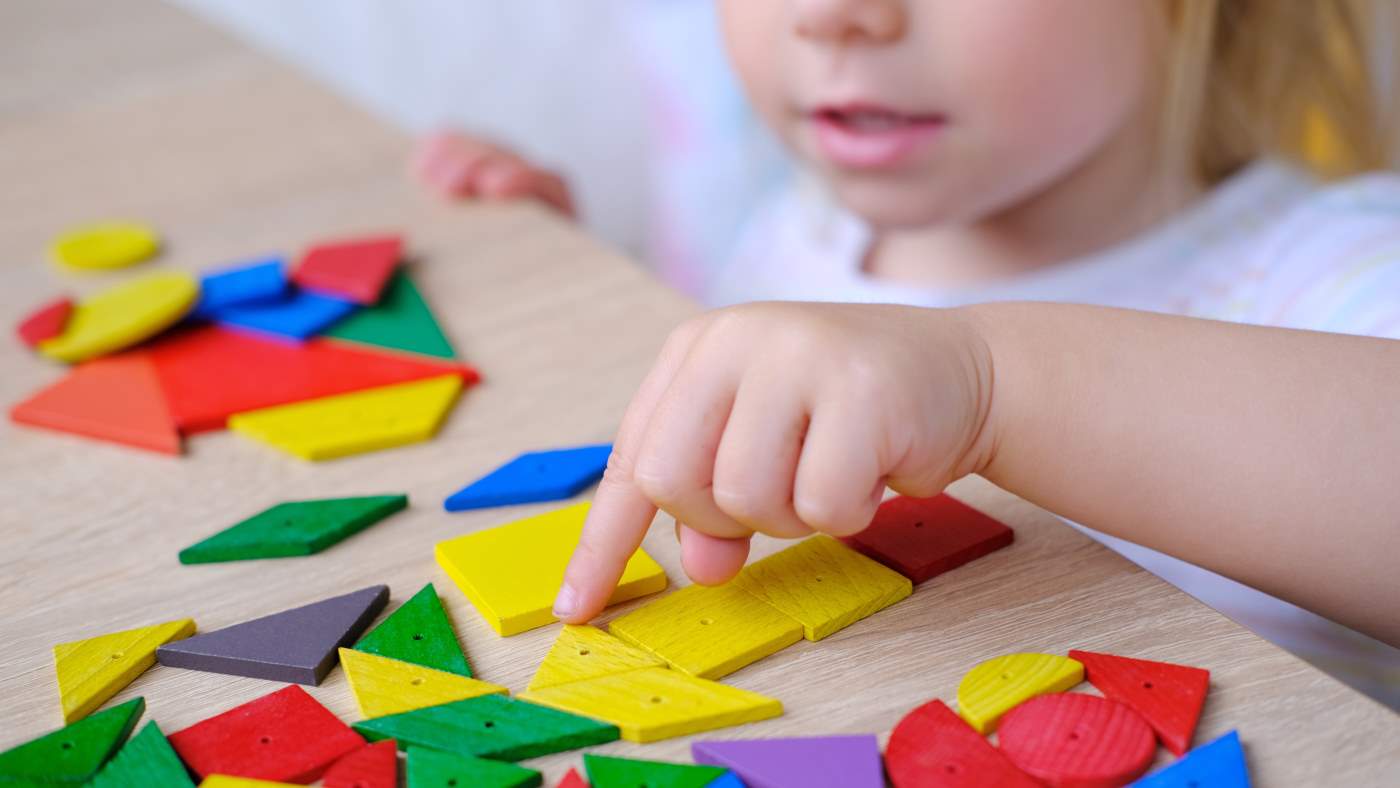Pointing out patterns is part of progress!

When you think of patterns you probably think about a visual image, perhaps artwork, or something you would see on a rug or set of curtains, but in fact we are surrounded by patterns of all kinds. Understanding patterns and sequences allows you to predict what might happen next or know what to do in order to get to a final goal. It helps us to count, to organise our day, to take turns and much more.
One study published in the Journal of Experimental Child Psychology[1] has reinforced the idea that understanding repeating patterns can help children’s maths knowledge by showing that for children aged 4-6 years, those whose knowledge of repeating patterns was stronger at the start of kindergarten went on to have better broad maths, and general numeracy, knowledge at the end of kindergarten.
The study showed a particular link between good repeating pattern understanding and counting to 100, which indicates the link between being able to spot and remember a pattern and counting (which repeats patterns especially as you count higher and higher).
You don’t need to start setting up elaborate repeating patterns or quizzing your child about what’s happening next, however.
Children are naturally curious and drawn to patterns and sequences, so you might notice that they point them out to you more and more as that curiosity combines with their knowledge of the world.
Your child might be starting to recall whose turn it is when playing a game, after a few goes around to get used to the pattern, or noticing that you always read a story after snack so begin to bring you a book in anticipation of the moment.
They might also start to show you their understanding of patterns by creating them while they play, although the pattern they make might not always be obvious to you at first! They might not choose to line up their cars as red, blue, red, blue and instead use a measurement for their pattern that you’ve not noticed like perhaps the height, number of windows or even personal preference for the toy.
You can start to point out patterns when you spot them, and explain how you knew it was a pattern, to encourage your child to not only notice them but also start to explain how the pattern might be working.
However you embrace patterns and sequences with your child, enjoy knowing that they are learning and developing new ideas based on all the new things they’re discovering about the world – and these skills will help them with maths and beyond!
Reference:
[1] Erica L. Zippert, Ashli-Ann Douglas, Bethany Rittle-Johnson. (2020) ‘Finding patterns in objects and numbers: Repeating patterning in pre-K predicts kindergarten mathematics knowledge’. Journal of Experimental Child Psychology. Volume 200;104965. ISSN 0022-0965. https://doi.org/10.1016/j.jecp.2020.104965.